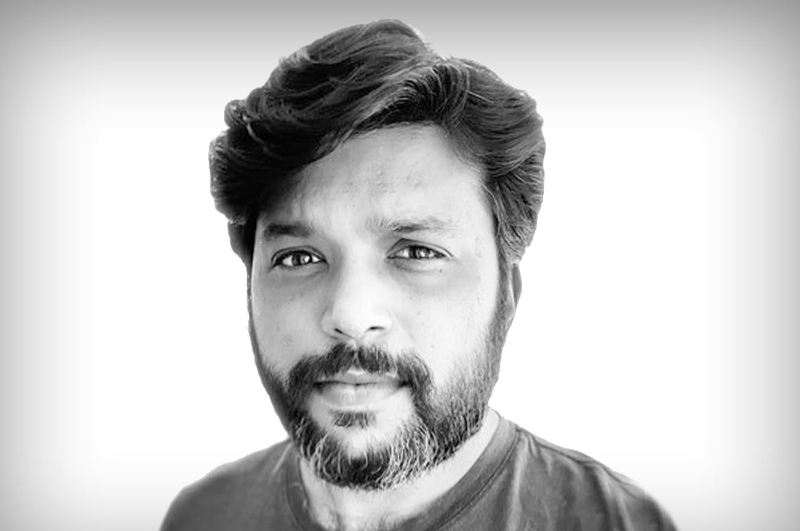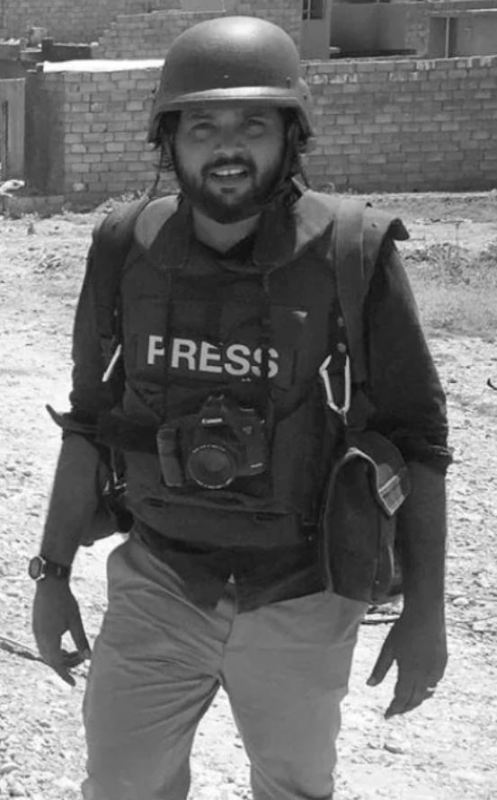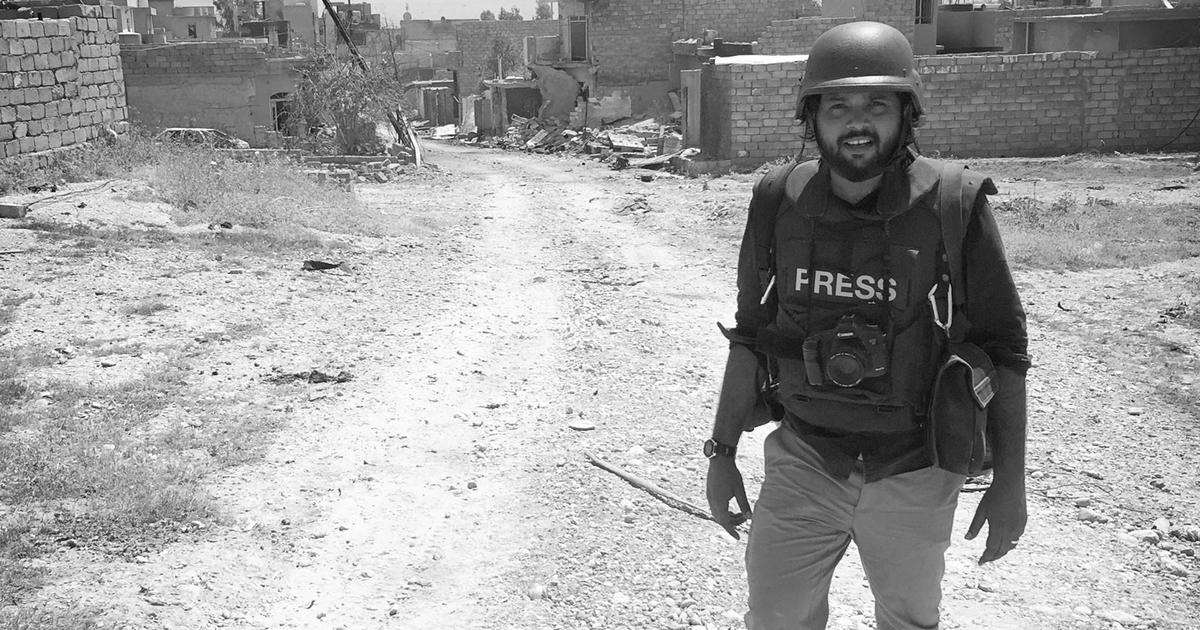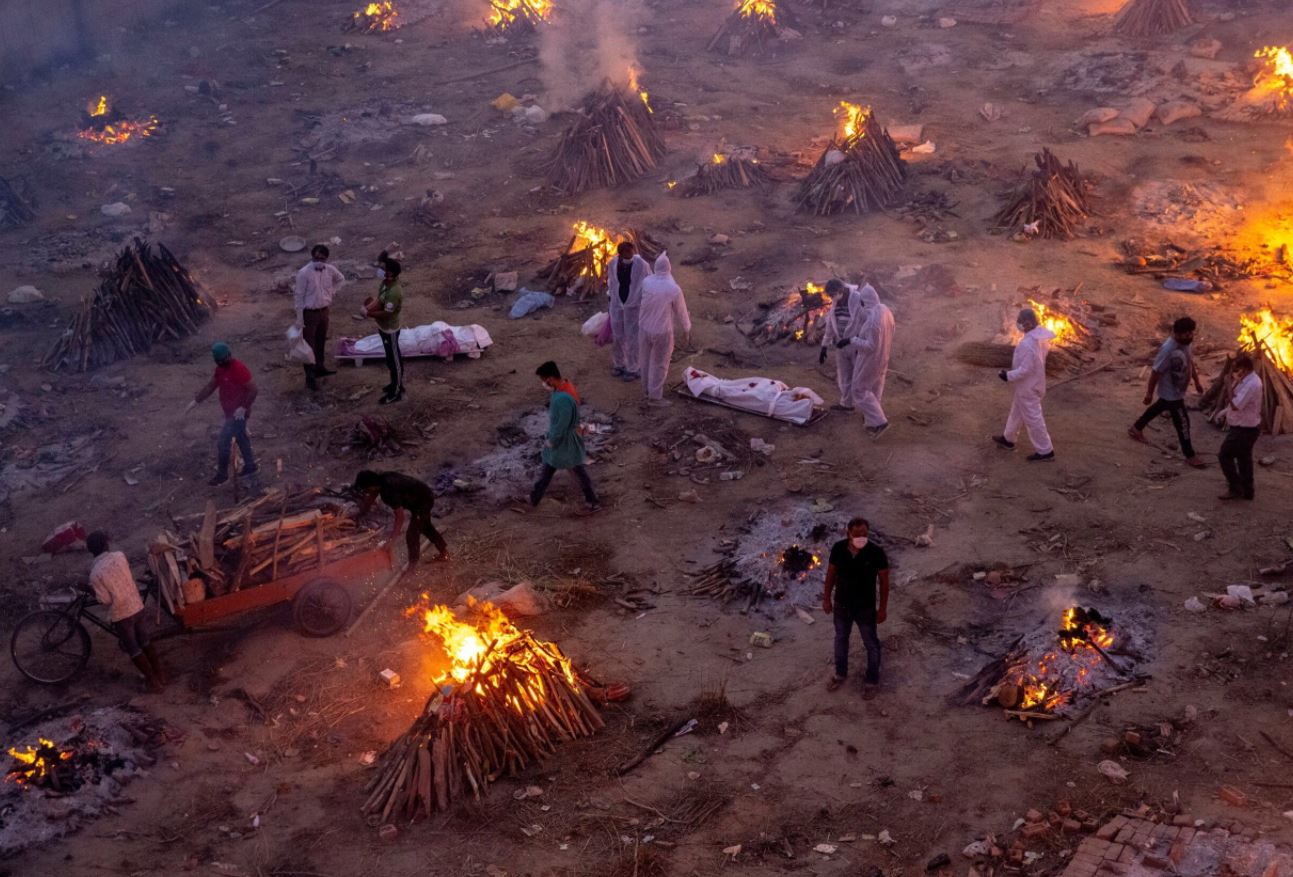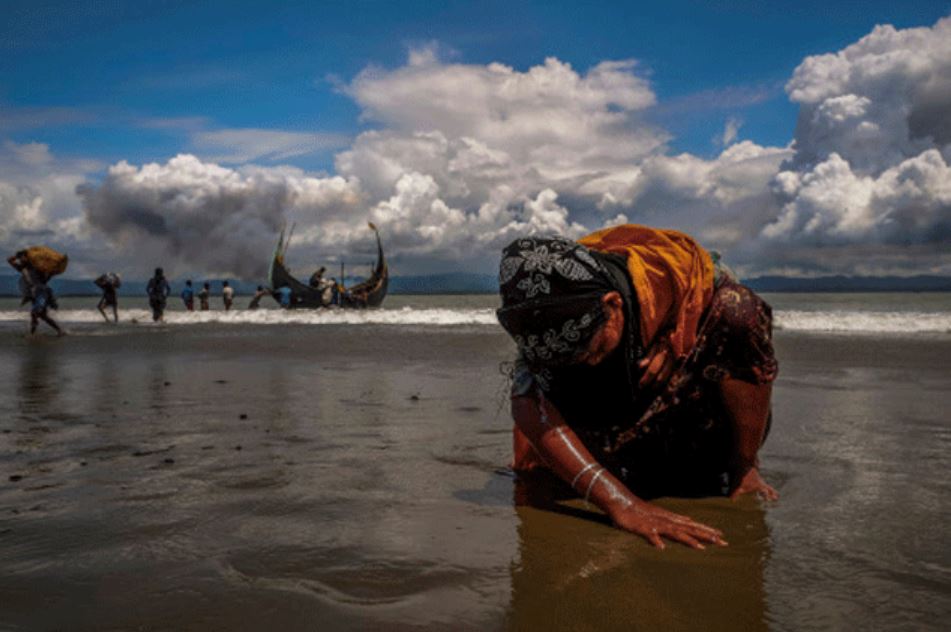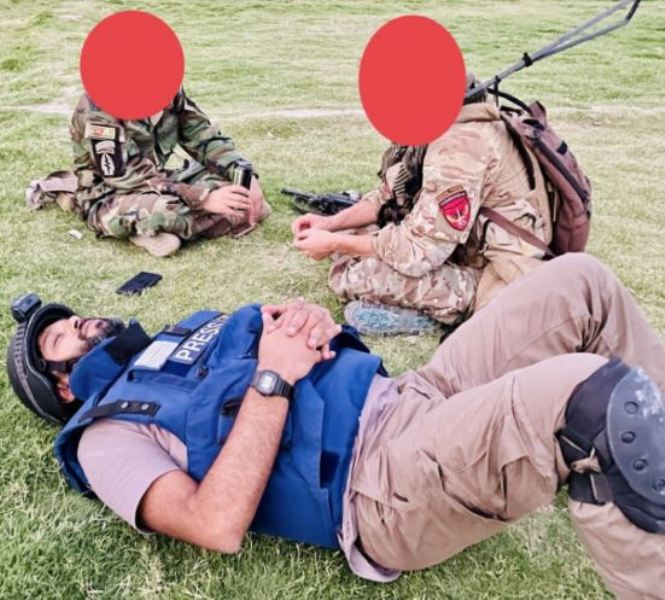Danish Siddiqui Age, Death, Wife, Children, Family, Biography & More
| Bio/Wiki | |
|---|---|
| Full name | Ahmad Danish Siddiqui [1]Reuters |
| Profession | Photojournalist |
| Physical Stats & More | |
| Eye Colour | Black |
| Hair Colour | Salt and Pepper |
| Career | |
| Award | He won the Pulitzer Prize in 2018. |
| Personal Life | |
| Date of Birth | 19 May 1983 (Thursday) |
| Birthplace | Delhi, India |
| Date of Death | 16th July 2021 |
| Place of Death | Spin Boldak, Kandahar, Afghanistan |
| Age (at the time of death) | 40 Years |
| Death Cause | Multiple gunshot wounds [2]The Hindu |
| Zodiac sign | Taurus |
| Nationality | Indian |
| College/University | Jamia Millia Islamia, a central university in New Delhi, India. |
| Educational Qualification(s) | • He received a graduate degree in Economics at Jania Millia Islamia, Delhi. • He pursued a degree in Mass Communication from the AJK Mass Communication Research Centre in Jamia in 2007. [3]Danish Siddiqui Website |
| Relationships & More | |
| Marital Status (at the time of death) | Married |
| Family | |
| Wife/Spouse | He was married to Rike, a German national. |
| Children | The couple had two children. |
| Parents | Father- Akhtar Siddiqui Mother- His mother's name is not known. |
Some Lesser Known Facts About Danish Siddiqui
- Danish Siddiqui was an Indian photojournalist, who was a Pulitzer Prize-winning photojournalist.
- Apparently, Danish started his career in journalism on television as a news correspondent. Later, he chose photojournalism as his core area of work.
- Soon after opting for photojournalism, he started his job at India Today Group as a correspondent and worked there from September 2008 to January 2010.
- Soon after leaving the job at India Today Group, he started working as an intern at the international news organisation ‘Reuters.’
- Later, Danish Siddiqui was appointed as the Chief Photographer of Reuters in India.
- In 2016-17, Danish Siddiqui covered the Battle of Mosul.
- In April 2015, Danish Siddiqui was on a mission to cover the Nepal Earthquake as the Chief Photographer of Reuters.
- In 2016, he covered the refugee crisis arising from the Rohingya genocide and persecutions by the Myanmar military of the Muslim Rohingya people.
- In 2019-20 he was involved in covering the Hong Kong protests.
- The 2020 Delhi Riots were also covered by Danish Siddiqui.
- In 2020, he was engaged in covering the Covid-19 pandemic in South Asia, Middle East, and Europe.
- In July 2021, Danish Siddiqui was on an assignment to cover the situation in Afghanistan’s Kandahar. Apparently, he was involved with the Afghan Special Government Forces on some special missions.
- On 13 June 2021, he took to Twitter to reveal that he was targeted by at least 3 RPG rounds when he was covering the conflicts while he was travelling in the vehicle with other special forces.
The Humvee in which I was travelling with other special forces was also targeted by at least 3 RPG rounds and other weapons. I was lucky to be safe and capture the visual of one of the rockets hitting the armour plate overhead. pic.twitter.com/wipJmmtupp
— Danish Siddiqui (@dansiddiqui) July 13, 2021
- On 16 July 2021, he died with multiple gunshots, when there was a rise in the clash between the Afghan Special Forces and the Taliban.
- The situation intensified after the killing of Danish Siddiqui amid Afgan government and Taliban clashes. Soon after the death of Danish, the US-led international forces back out from the conflict area. Taliban successfully captured more than half of the borders and districts in the north and west of Afganistan.
- Siddiqui used to lead the Reuters Pictures team in India. [4]Tedx Gateway
- In 2018, Danish Siddiqui became the first Indian to win the Pulitzer Prize along with his teammate Adnan Abidi. He earned this prize as a staff member of the international Reuters organization for clicking a picture that depicted an exhausted Rohingya refugee who was touching the border area at the Bay of Bengal while crossing the Bangladesh-Myanmar border with a boat. He documented the Rohingya Refugee Crisis in 2016.
- Various renowned magazines, newspapers and television news channels including National Geographic Magazine, New York Times, The Guardian, The Washington Post, Wall Street Journal, Time Magazine, Forbes, Newsweek, NPR, BBC, CNN, Al Jazeera, South China Morning Post, featured his photographs in their content. [5]Danish Siddiqui Website
- Reportedly, Danish was honoured with several accolades by various countries including the USA, England, China and India for his outstanding photography.
- Danish Siddiqui shot a picture of the audience with exclaimed emotions at the theatre while they watching the movie Dilwale Dulhania Le Jayenge. He wrote with this picture,
I photographed people watching a romantic Bollywood film while I was doing a feature on a Mumbai theatre, which has been showing the same film for the last 15 years. The way a film can help people forget their worldly worries, everyday hassles, and cares makes this picture special for me.”
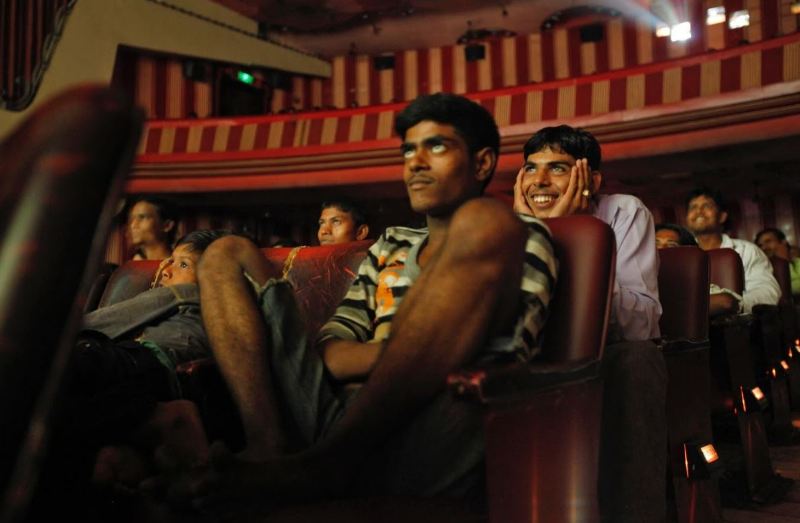
A picture shot by Danish, at a cinema hall, when people were watching the Indian movie Dilwale Dulhania Le Jayenge
- In his biography on Reuters, Danish Siddiqui explained his first assignment with Reuters. He said,
As an intern, to accompany the chief photographer for India to a religious festival that is held every 12 years in a different city around the country. Hundreds of thousands of Hindus take part in this religious carnival of sorts. It was a great experience for me, and I learnt new shooting, editing and filming techniques.”
- Danish adored writing quotes with his pictures. A quote written by Danish while he was on an assignment on photojournalism was,
While I enjoy covering news stories – from business to politics to sports – what I enjoy most is capturing the human face of a breaking story.”
- In his biography, Danish remembered his initial memories related to camera,
A camera borrowed from a neighbour, black and white rolls of film bought with half my pocket money, and a school hiking trip in the Himalayas.”
- Danish’s biography which was mentioned on Reuters’ website narrated his first encounter with formal photography training. He told in his biography,
At film school, where one module was dedicated to still photography. I was also exposed to photojournalism while working as a television journalist with one of the largest news television networks in India. Ninety percent of the photography I have learnt has come from experimentation in the field.”
- Danish enjoyed covering all-new stories and news. He told in his biography,
From business to politics to sports – what I enjoy most is capturing the human face of a breaking story. I really like covering issues that affect people as the result of different kind of conflicts.”
- According to Danish, the essence of his photography was the emotions attached to the photograph. He said,
Who wants to see and feel a story from a place where he can’t be present himself.”
- In his biography on Reuters, Danish mentioned the lessons he learnt in his life. He said,
To adapt myself as quickly as possible when the story changes in the middle of an assignment.”
- In an interview, Danish narrated his field of interest in photography. He said,
Apart from daily features and “bread and butter” assignments, I love shooting in-depth features around the country – and also cricket, the most popular religion in India!”
- Farid Mamundzay, Afghanistan’s Ambassador to India, tweeted on the death of the Danish Siddiqui on 16 July 2021. He wrote,
Deeply disturbed by the sad news of the killing of a friend, Danish Seddiqi in Kandahar last night. The Indian Journalist & winner of Pulitzer Prize was embedded with Afghan security forces. I met him 2 weeks ago before his departure to Kabul. Condolences to his family & Reuters.”
- In July 2021, Danish posted a picture on his social media account while resting with the Afghani soldiers.
- On 18 July 2021, the death certificate of Danish Siddiqui was issued in Kabul by the Embassy of India. On the certificate, it was written that Danish Siddiqui died on 16 July 2021 at Spin Boldak, Kandahar, Afghanistan, while he was on an assignment with Reuters, as a chief reporter and photographer. “Multiple gunshot wounds” was the cause of the death of Danish Siddiqui that was mentioned on the death certificate. [6]The Hindu
References/Sources:

